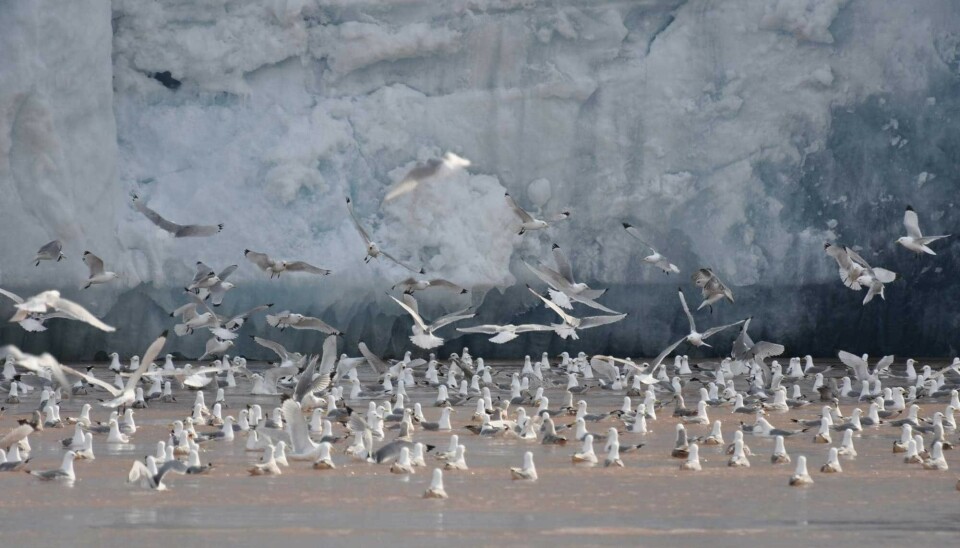
Melting glaciers: lifeline or threat for Arctic fjords and coasts?
Glaciers across the Arctic are melting. Glacial run-off enters fjords and coastal waters, but we know little about its impact on ocean life. Understanding how marine organisms from microbes to mammals respond is critical for sustainable management of coastal ecosystems and the services they provide.
By: Philipp Assmy, Allison Bailey, Pedro Duarte, Geir Wing Gabrielsen, Haakon Hop, Elisabeth Isaksson and Jack Kohler // Norwegian Polar Institute, Jemma Wadham, Mohamed Ezat, Sarah Tingey and Silje Waaler // UiT The Arctic University of Norway, Amanda Poste // Norwegian Institute of Nature Research, Jon Hawkings // University of Pennsylvania and Marianna Pinzone // University of Liege
Glaciers are intrinsic to the Arctic, covering >2 million km2 of land area above 50°N. In many Arctic sectors, such as Svalbard, the Canadian Arctic and Greenland, glaciers dominate the landscape and are central to the complex relationship between fjords, oceans and their precious ecosystems. In Svalbard 57% of the land area is covered by glaciers and over 900 km of the coastline is lined by tidewater glaciers that calve directly into the sea.
Combined, these glaciers release an average of 45 billion tonnes of sediment-laden meltwater into the coastal ocean every year. It requires little imagination to appreciate that accelerating this hydrological cycle with climate warming will leave a lasting imprint on the interconnected ice–land–ocean systems and the coastal ecosystem services on which humans rely.
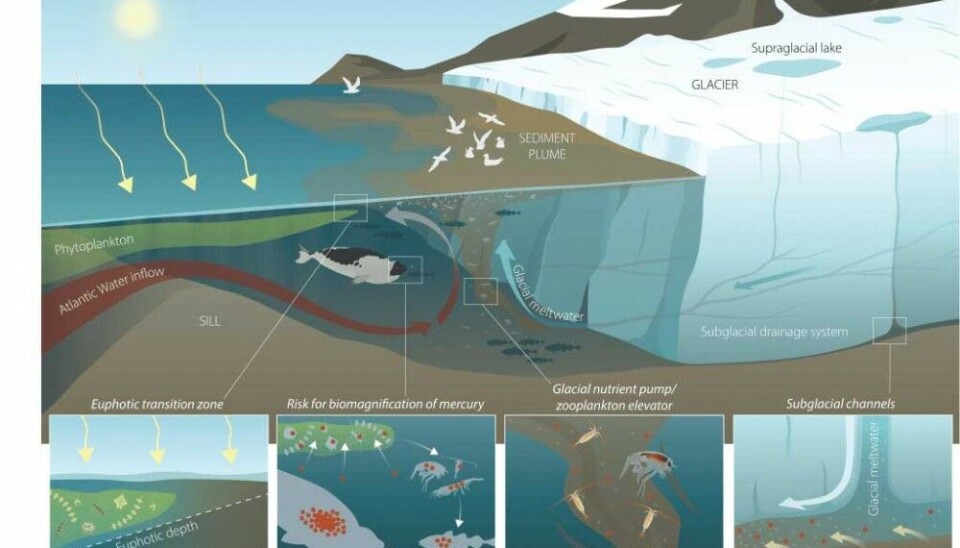
Accelerated melting
Svalbard is warming twice as fast as the rest of the Arctic and five to seven times faster than the global average. Feeling the brunt of Arctic climate and ocean warming are its >2000 glaciers, which have undergone sustained and accelerating mass loss over the past decades. This is driving the landward march of tidewater glaciers and the expansion of glacier forefields, as well as changing freshwater and glacial sediment discharge to fjords, altering fjord circulation and contributing to coastal-water darkening.
While these physical impacts are relatively well studied, the response of fjord ecosystems to the chemical pulse of glacial meltwaters is poorly known and represents something of a conundrum via opposing positive and negative effects. Here we describe how glacier bays act as refugia for Arctic endemic species. Then we examine how glacial meltwater both stimulates fjord productivity via the release of nutrients and exerts potential toxic effects in fjords through release of glacier-derived heavy metals.
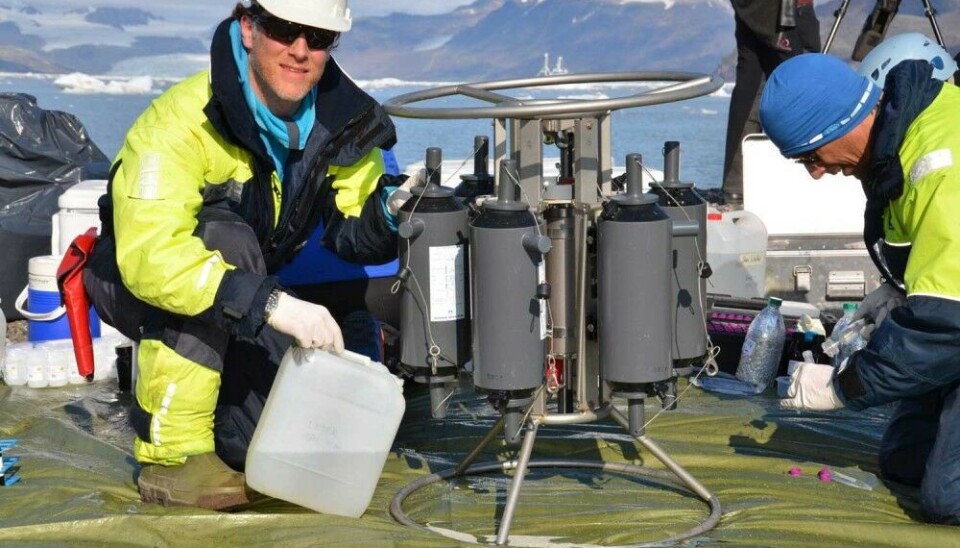
Arctic climate refugia
In Svalbard fjords, landfast sea ice is disappearing, particularly along the west coast, and increased advection of warm Atlantic water carries organisms from lower latitudes. Arctic endemic species are thus faced with habitat loss and increased competition from boreal species.
Glacier bays may buffer some of these impacts and act as climate refugia for Arctic endemic species because they host Arctic-like conditions: colder and fresher surface waters compared to the outer fjord and seasonal ice-cover. Sea ice and floating icebergs provide habitats for algae and small animals living inside the sea ice and offer haulout platforms for seals. Additionally, the rising meltwater plumes at tidewater glacier fronts bring zooplankton to the surface where they provide food for seabirds, such as black-legged kittiwakes and northern fulmars. Flocks of several hundred birds can congregate on the upwelling plume right in front of the towering glacier wall for an easy meal. These feeding hotspots in close proximity to the nesting sites might become increasingly important as drifting sea ice retreats further offshore. Ringed seals also frequently visit glacier meltwater plumes during their foraging forays for their favorite diet, polar cod, suggesting that glacier bays are an important refuge for this Arctic fish species.
The glacier nutrient pump
Glacial run-off coincides with the nutrient-poor summer months in fjords. While phytoplankton growth is generally light-limited in inner fjords by the “brown soup” associated with turbid glacier meltwaters, glacier meltwater can fertilise fjord productivity further downstream.
This happens in two ways, 1) direct release of macro- (eg silicon) and micronutrients (eg iron) from minerals by chemical and biological processes, and from atmospherically-deposited nutrients (eg nitrogen) from melting snow pack, and 2) indirect supply via “pumping” of nutrient-rich deep fjord waters to the surface by meltwater discharge which upwells at the fronts of tidewater glaciers.
The nutrient pump pathway is generally believed to be more efficient in delivering macronutrients to the sea. Studies from Greenland have shown that fjords with tidewater glaciers sustain phytoplankton blooms throughout the summer, unlike fjords with land-terminating glaciers which generally have low productivity.
In Kongsfjorden, northwestern Svalbard, this tidewater “nutrient pumping” has been observed to enhance summer primary production by up to 20%. The retreat of tidewater glacier fronts onto land might thus have a negative impact on fjord productivity. However, the efficacy of the nutrient pump will depend on the depth at which glacial meltwater is injected into the fjord. In very deep fjords, the upwelling meltwater plume might not even make it to the surface, while in shallow fjords it will not tap into the most nutrient-rich deep waters. Augmenting these glacial fertilising effects are non-glacial rivers that transport nutrients from thawing permafrost, lakes, and soils to the fjord, and fjord bottom sediments where nutrients are remobilised from glacial sediments and marine muds.
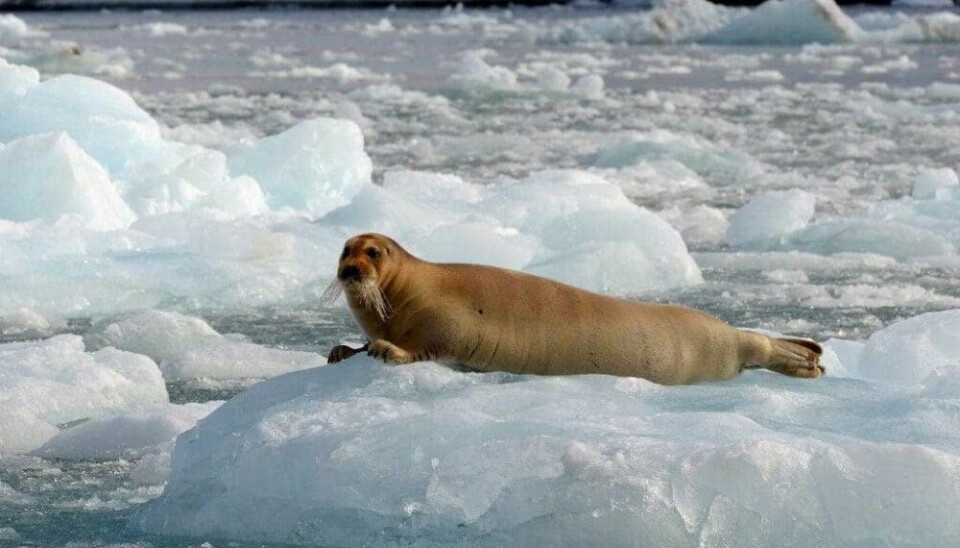
Glaciers as a source of toxins
Glaciers are the most powerful “rock grinding” machines on the planet, and the fine flour generated at the glacier bed is dissolved by biogeochemical processes. The resulting meltwaters can be rich in minerals and chemical elements. Depending on the bedrock composition, trace and heavy metals, such as arsenic, lead, or mercury, can reach high concentrations.
Mercury, in particular, can bio-accumulate in fjord food webs and trigger toxicity in marine ecosystems. For example, rising mercury levels in polar bear hair and kittiwake blood samples from Svalbard have been linked to glacial meltwater inputs and changing glacier forefields. While effects vary amongst metal species and across different trophic levels, and organs and tissues, top trophic predators normally display the greatest levels of enrichment and toxicity.
What controls heavy metal export from glaciers and the resulting toxicity in marine food webs represents a huge gap in our knowledge, making it challenging to devise management policies for Arctic waters and their ecological services. The challenge is further exacerbated by the rapidity of Arctic glacier change.
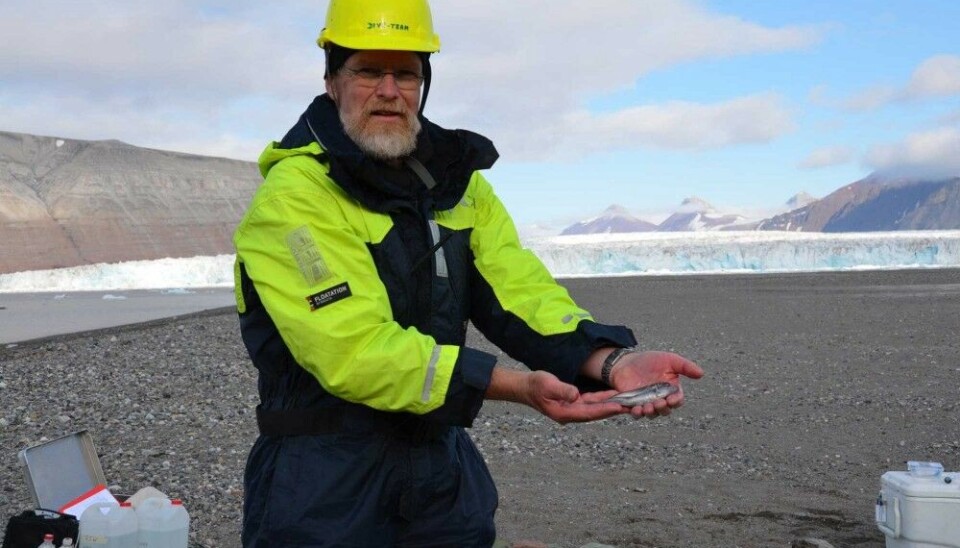
Perspectives
Fjords and coastal ecosystems support local communities and national economies across the Arctic via lucrative fisheries and tourism. This highlights an urgent need for an improved understanding of the impacts of glacier retreat on nutrient availability and metal toxicity in Arctic marine food webs and the role of glacier bays as climate refugia.
Such fundamental knowledge is needed to inform policymaking and adapt environmental management solutions. Four new research initiatives led by Fram Centre institutions in collaboration with international partners will tackle these multifaceted issues. The Centre for ice, Cryosphere, Carbon and Climate (iC3) and the METALLICA project, both funded by the Research Council of Norway, will improve our understanding of the export and fate of glacier-sourced carbon, nutrients, toxic metals and other pollutants over ice-to-ocean gradients and their impacts on fjord and ocean ecosystems.
The EU-funded project FACE-IT aims to enable adaptive co-management of social-ecological fjord systems in the Arctic in the face of rapid cryosphere and biodiversity changes.
The Fram Centre research programme From Catchment to Coast (C2C) also applies a holistic, integrated approach across terrestrial, freshwater, and marine ecosystems to assess how global change will impact cross-ecosystem connectivity and how this understanding can be used for improved ecosystem-based management.
In combination, these initiatives have the potential to transform our understanding how Arctic fjords and marine ecosystems will respond to the impacts of glacier change, helping us to adapt to future change via community action and management policies.
Further reading
Everett A, Kohler J, Sundfjord A, Kovacs KM, Torsvik T, Pramanik A, Boehme L, Lydersen C (2018) Subglacial discharge plume behaviour revealed by CTD-instrumented ringed seals. Scientific Reports 8:13467, doi: 10.1038/s41598-018-31875-8
Halbach L et al (2019) Tidewater glaciers and bedrock characteristics control the phytoplankton growth environment in a fjord in the Arctic. Frontiers in Marine Science 6:254, doi: 10.3389/fmars.2019.00254 Lydersen C et al (2014) The importance of tidewater glaciers for marine mammals and seabirds in Svalbard, Norway. Journal of Marine Systems 129:452–471, doi: 10.1016/j.jmarsys.2013.09.006














